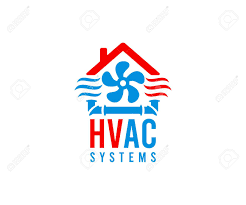Heating, ventilation, and air conditioning
This article is about technology of indoor and vehicular environmental comfort. For high-voltage alternating current, see high-voltage alternating current. For efforts to reduce changes to Earth's climate (climate control), see Climate change mitigation.
Rooftop HVAC unit with view of fresh-air intake vent
Ventilation duct with outlet diffuser vent. These are installed throughout a building to move air in or out of rooms.
The control circuit in a household HVAC installation. The wires connecting to the blue terminal block on the upper-right of the board lead to the thermostat. The fan enclosure is directly behind the board, and the filters can be seen at the top. The safety interlock switch is at the bottom left.
Heating, ventilation, and air conditioning (HVAC)[1] is the technology of indoor and vehicular environmental comfort. Its goal is to provide thermal comfort and acceptable indoor air quality. HVAC system design is a subdiscipline of mechanical engineering, based on the principles of thermodynamics, fluid mechanics and heat transfer. "Refrigeration" is sometimes added to the field's abbreviation, as HVAC&R or HVACR or "ventilation" is dropped, as in HACR (as in the designation of HACR-rated circuit breakers).
HVAC is an important part of residential structures such as single family homes, apartment buildings, hotels and senior living facilities, medium to large industrial and office buildings such as skyscrapers and hospitals, vehicles such as cars, trains, airplanes, ships and submarines, and in marine environments, where safe and healthy building conditions are regulated with respect to temperature and humidity, using fresh air from outdoors.
Ventilating or ventilation (the "V" in HVAC) is the process of exchanging or replacing air in any space to provide high indoor air quality which involves temperature control, oxygen replenishment, and removal of moisture, odors, smoke, heat, dust, airborne bacteria, carbon dioxide, and other gases. Ventilation removes unpleasant smells and excessive moisture, introduces outside air, keeps interior building air circulating, and prevents stagnation of the interior air.
Ventilation often refers to the intentional delivery of the outside air to the building indoor environment. It is one of the most important factors for maintaining acceptable indoor air quality in buildings. Methods for ventilating a building are divided into mechanical/forced and natural types.[2]

Contact Us